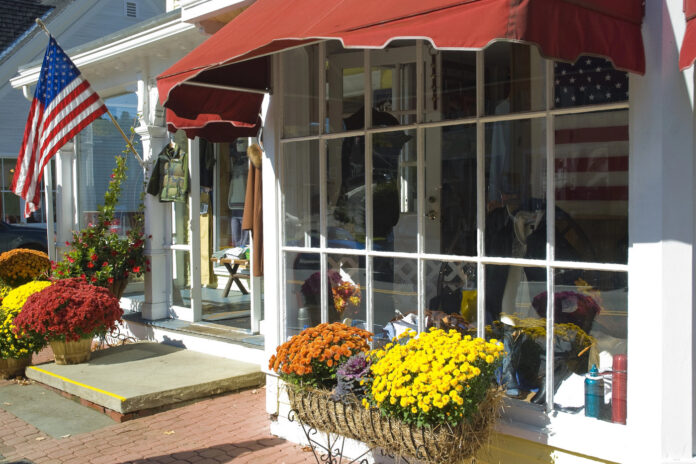In the earliest days of adult-use sales, many (possibly even most) dispensaries still gave off a slightly illicit vibe. Found in locations off the beaten path and far from other retailers, the first dispensaries often were heavily branded with old-school imagery and jargon—think lots of green leaves and “pot” puns. What’s more, the first stores licensed to sell adult-use products almost always featured an armed security presence. At the time, consumers were accustomed to seeing security guards primarily at banks, airports, or large events.
While this environment was mostly agreeable (and even enjoyable) for adult-use consumers who were simply happy to have legal access to cannabis, the atmosphere served as a big turnoff to many new consumers. In addition, it provided fodder for critics who saw recreational use as a burden on communities.
Despite these initial challenges, the great adult-use legalization movement that began in Colorado and Washington demonstrated cannabis could hold widespread consumer appeal. Those who initially were hesitant eventually began to reconsider and, as they did, it quickly became clear some were interested in cannabis for health reasons but hadn’t participated in their state’s medical program. Over time, customers began seeking a variety of experiences from cannabis, from social lubrication to relaxation, wellness, and beyond.
As legalization proliferated, the number of consumers with access to the plant grew exponentially. Today, according to a 2024 Pew Research Center survey, eight out of ten Americans (79 percent) live in a county with at least one dispensary. The typical customer is more suburban dad than stoner dude. Increasingly, the customer base includes suburban moms and young professionals, while what we used to call stoners are now “connoisseurs.”
3 mainstream approaches to retail and marketing for dispensaries
Dispensaries are judged by modern retail standards like service speed, convenience, product quality, and attention to details like branding, experience, and value. Customers increasingly want a frictionless retail experience from an industry that is still finding its way.
If operators are going to capture this market for the long haul, they must take a mainstream approach to retail and marketing. By borrowing lessons from traditional retailers and adapting the teachings so they work within each state’s regulatory framework, businesses will project legitimacy in the eyes of modern consumers.
Provide a modern retail experience
Strong traditional retail brands with the highest loyalty achieved their status by providing an exceptional retail experience. These brands intimately understand customers and the shopping environment they desire. Take Abercrombie & Fitch, a clothing brand whose stock price has surged more than 75 percent in 2024. The brand’s focus on social media interaction, influencers, and affiliate marketing—while moving away from dark stores with loud music and fierce cologne—shows how well A&F knows its customers. Its customer-centric approach touches the product offerings, the marketing strategy, the sourcing strategy, and the store-versus-digital business breakdown.
Cannabis consumers have the same expectations of their favorite brands, and the industry can deliver similar performance outcomes. Customers expect cannabis businesses to have a robust digital presence, a welcoming environment, knowledgeable associates, and a commitment to the plant.
Broaden product variety and sales approach
According to a new study by researchers at Carnegie Mellon University, the number of people who consume cannabis daily now exceeds the number who drink alcohol daily, strongly suggesting the audience stretches across multiple market segments. In order to meet this growing and varied demand, the industry must adapt to the needs of consumers. This begins with creating an evolving product assortment that addresses a variety of needs and moods.
It is essential that retailers monitor customer preferences to ensure top sellers are well stocked and new options are provided at regular intervals. Dispensaries that provide educational resources for curious consumers, as well as hire (and train) helpful budtenders to guide customers, will attract and retain new customers.
Dispensaries must reduce reliance on tired “pot” jargon and imagery to make stores as comfortable for the cannacurious and the wellness set as they are for the legacy crowd. (Save the iconic references for occasional use on appropriate events or products.) Retailers must offer express-lane service, preorder capabilities, in-store kiosks, and store associates who act like sommeliers. Similar to the best retail brands, dispensaries must be places of education and intrigue.
Create and build brands with crossover appeal
Think twice (or more) before focusing solely on the “OG” cannabis buyer. Instead, develop retail and product brands that resonate beyond the core customer to speak to broader needs and desires. Today, consumers cite anxiety relief, sleep assistance, relaxation and, yes, feeling high, among the many reasons for consumption. Brands that focus exclusively on that last reason potentially ignore a huge portion of the market.
The best brands evoke a sense of wellbeing, health, community, and culture. Retailers welcome all kinds of consumers by providing a familiar-feeling space where customers feel free to express their needs. Product brands that resonate also tend to focus on positive outcomes over the potency of the product.
Brands need to resist the temptation to stereotype consumers (for example, “only potency matters”). Instead, create brands that reflect the needs of multiple audiences and build awareness through hosting or sponsoring niche educational events for women, seniors, and others; culture-focused music and art events; and community organizations.
Today’s consumer is much different from the people who ventured into dispensaries ten years ago. Where the industry once catered to a very specific, niche demographic, shops now are refining their appeal beyond the core early adopter. If retailers are going to succeed, mainstream cannabis must look and feel a lot more like Main Street than the mean streets.
As legalization continues to proliferate across the country and the winds of federal reform blow, this may be the industry’s defining moment. We must seize the opportunity.

Richard Proud’s leadership has been instrumental in shaping product and business strategies for multiple globally recognized consumer retail brands, including Abercrombie & Fitch, Hollister, and Garage. He currently serves as chief executive officer at iAnthus, which owns and operates licensed cannabis cultivation, processing, and dispensary facilities throughout the United States.













